

Traversing Japan's Snow Country
| Although the metropolises of Tokyo and Osaka may not see much snowfall during winter, those looking for a snowy escape in Japan will find no shortage of places to visit. The northern half of Japan’s main island, wedged between the Sea of Japan and the Japanese Alps, is known colloquially as ‘snow country’ (yukiguni/雪国), or more officially as ‘Heavy Snowfall Zones’ (gosetsu chitai/豪雪地帯). This region, which spreads from Shimane in the south up to the northern tip of the main island and all the way to Hokkaido, experiences a prolonged snow season characterised by heavy and long-lasting snowfalls. As the name ‘snow country’ suggests, this region of Japan receives some of the highest amount of snowfall in the world! It may seem difficult to thrive in such a snowy region, but there is evidence that Japan’s snow country has been populated for over 8,000 years, since the Jomon period. Even today, the top three spots for the snowiest cities in the world with populations of over 100,000 all belong to cities in Japan’s snow country: Aomori, Sapporo, and Toyama. The heavy snowfall is due to both weather and geographical conditions. In the winter, cold winds that form over the Asian continent will pass over the Sea of Japan, picking up warm moisture and creating clouds. When these clouds meet the high mountains of Japan, the air cools rapidly, forming snowflakes that will then fall to earth. Interestingly, the snow country region is well known for the high quality of its snow! This ideal snow–characterised as dry and powdery–that falls in certain parts of the country is thanks to particular weather and geographical conditions. The powdery snow that piles high on the mountain slopes in this region are particularly popular with winter sports junkies; every winter, skiers and snowboarders flock to snow resorts all over Northern Japan to take advantage of the ideal snow conditions. Of course, those looking for a more relaxing trip can still enjoy playing in the snow on sleds and snowmobiles. Onsen towns may also have rotenburo (露天風呂), open-air hot spring baths; guests can marvel at the sight of snow falling overhead, turning the world around them into a winter wonderland while they relax, nice and warm, in a hot spring bath. Agricultural activities are less feasible than in sunnier climes; accumulated snow covers fields and may even make it difficult for residents to access markets for fresh produce. However, residents have developed an ingenious way to keep vegetables harvested during the warmer seasons fresh throughout the harsh winter. The practice of storing vegetables by burying them under snow, also known as yukishita yasai (雪下野菜) or secchu yasai (雪中野菜), was developed as a form of natural refrigeration and to slow the process of food spoilage. These vegetables, while being buried under the snow in a dark, cold place with high levels of humidity, go through a process where their starch content is broken down into sugars, and more amino acids are produced. This results in aged vegetables that are not only sweeter and softer in texture, but also less odorous. The leftover vegetables can also be used as field fertiliser when the weather gets warm enough for farming and harvesting. This practice is said to have conceived thousands of years ago by the Jomon people, who were thought to have buried their produce much deeper than people do today! While a snowy landscape can look brilliant and beautiful, it can also pose several threats to residents in the area. Snowstorms and avalanches are a real threat. Furthermore, snow can easily accumulate to heights over 3 metres, snowing people into their homes and disrupting both land and sky traffic. Besides these disruptions, the weight of snow accumulated on rooftops can cause buildings to collapse. Clearing snow off rooftops is also a dangerous task, causing many injuries and even fatalities every year. |
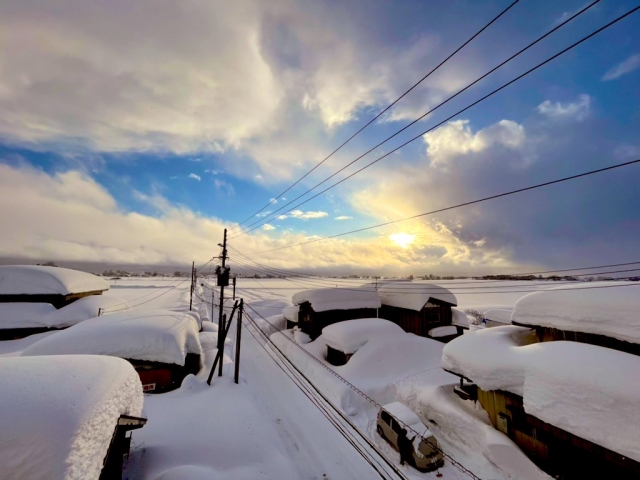 © photoAC 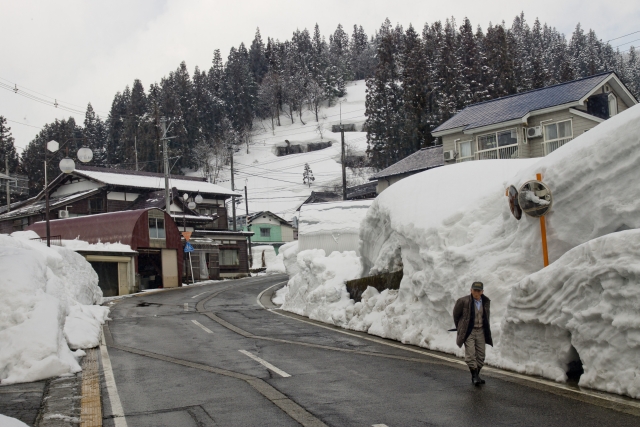 © photoAC 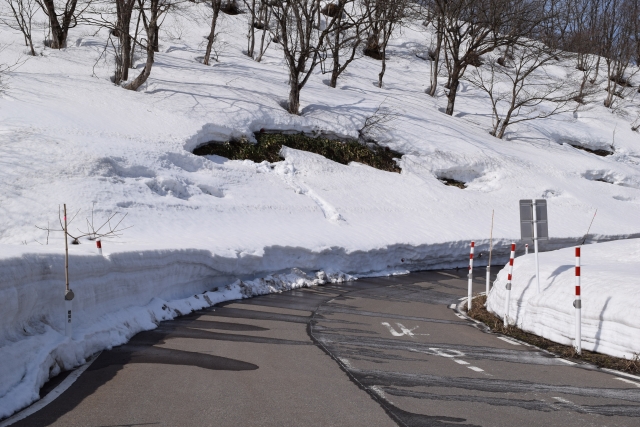 © photoAC 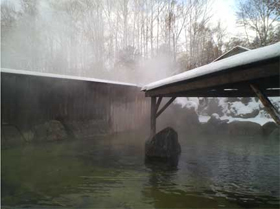 © Niseko Yugokoro-tei Onsen 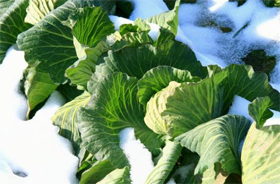 © photoAC 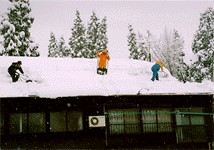 © Web Japan |
| To adapt to the snowy conditions, houses in this part of the country are built with special features. For one, the internal supporting posts are built thicker than in other regions: this is to better support the weight of the snow when it accumulates on the roof during heavy snowfall, preventing collapses. There are also snow stoppers on the roof to prevent the accumulated snow from sliding off. In some areas, where snow accumulates particularly high, front doors are located on the second story of the building instead of on the ground floor. As the ground level will not see much sunlight when it is covered by snow, the space may be utilised for storage instead of living or bedrooms. In some homes, residents may have large open hearths. Do you know what a kotatsu is? It is a wooden frame built over a heat source on the floor (sometimes a charcoal heater built in a small well built into the floor of the house). This wooden frame is then covered with a quilted blanket, which traps the warmth in, making it a cosy spot!
Besides homes, the streets in this region too are well equipped to deal with heavy snowfall. Snow can be cleared from roads with sprinkled water, fed through underground pipes. In some areas, teams operating snow plows can be deployed several times a day to keep busy roads and airport landing strips clear of snow and ice, ensuring a smooth and safe journey for all who travel through. Thanks to the snow, this region of Japan enjoys its own unique culture, food practices, and architecture. Aside from what has been described in this brief article, there are still many interesting aspects of Japan’s snow country such as its many winter festivals, and the practice of building little igloo-like houses known as kamakura (かまくら) in which rice cakes and amazake is served. For Singaporeans used to tropical weather all year round, traipsing through the snow country is sure to be an experience not to be missed if you are planning a trip to Japan in the winter! | 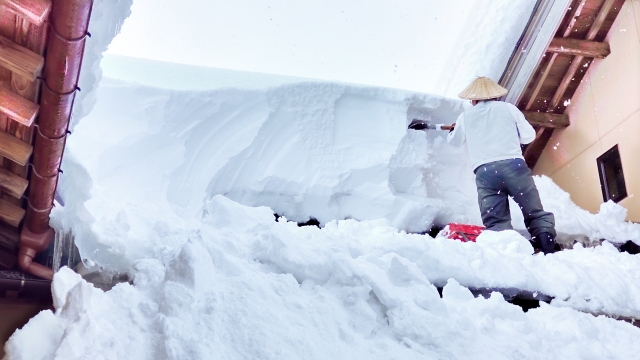 © photoAC 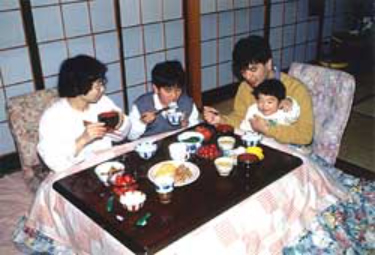 © The Japan Forum 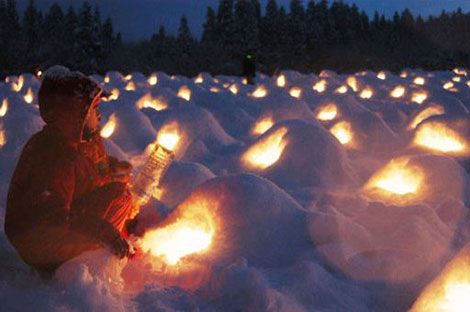 © Web Japan |
Resources
|
“Winter is coming”: exploring the snow countries of Japan. (2020). Retrieved 5 November 2021, from https://japanrailtimes.japanrailcafe.com.sg/web/article/seasons/snow-countries About. (2021). Retrieved 5 November 2021, from https://yukigunijapan.com/about/ Explore Japan - Nature and Climate. Retrieved 5 November 2021, from https://web-japan.org/kidsweb/explore/nature/q8.html February: Fun in the Snow - Manga. Retrieved 5 November 2021, from https://web-japan.org/kidsweb/manga/0802/index.html Snow Country: Northern Japan Home to Some of the World’s Heaviest Snowfall. (2018). Retrieved 5 November 2021, from https://www.nippon.com/en/features/h00357/ Why Japan in Winter?. Retrieved 5 November 2021, from https://www.japan.travel/snow/en/why_japan_in_winter/ |
|
Japan Creative Centre 4 Nassim Road, Singapore 258372 +65 6737 0434 / jcc@sn.mofa.go.jp https://www.sg.emb-japan.go.jp/JCC/ Nearest parking at Orchard Hotel & Delphi Orchard |
 |